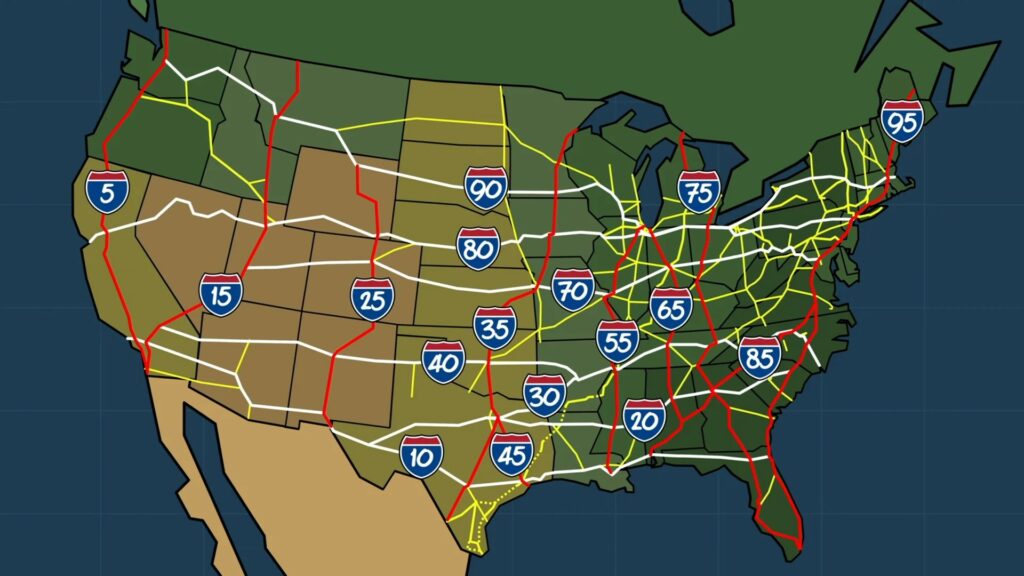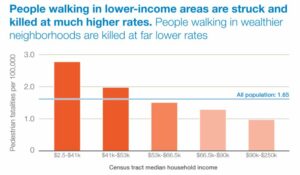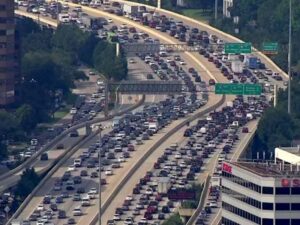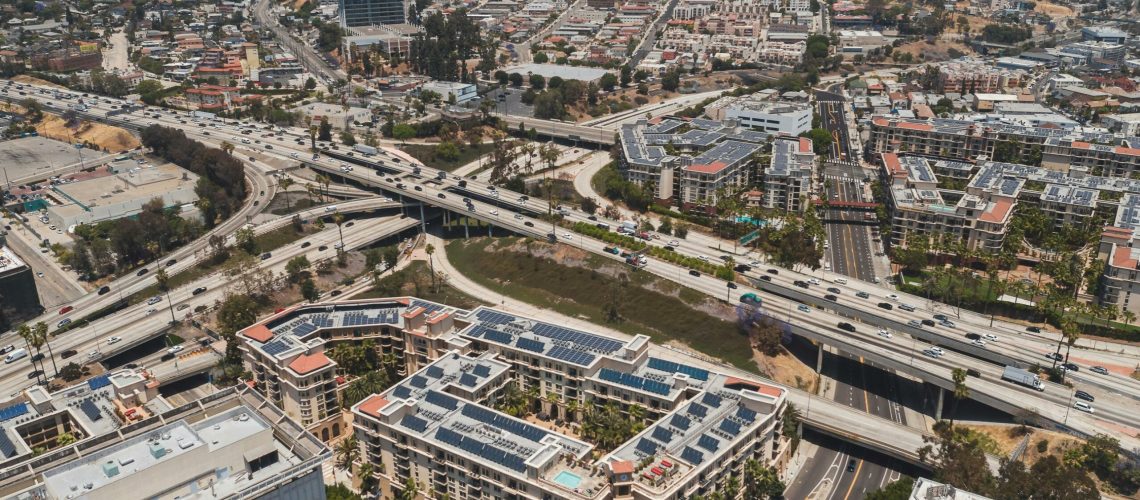Guest Post by Fawzi Khalife, 2023-2024 Sustainability Leadership Fellow, and Ph.D. Candidate in the Department of Civil & Environmental Engineering and the Department of Construction Management at Colorado State University
Have you been to a drive-through to grab a meal, withdraw money, or even test for COVID-19? If you have been, then you would appreciate the convenience of this service which is available in most regions of the U.S. You might have also enjoyed a high-speed ride on a wide interstate and stopped at a gas “convenience” station or a rest area! These are great features of the current transportation systems in most of the U.S., but at what cost?
Let us look at transportation in the U.S. from economic, social, and environmental perspectives. This article is not intended to assess highways or other modes of transportation as good or bad; it rather highlights some of the associated costs that are not usually thought of but have significant impacts on people and communities.
When cost is mentioned, most people would think of the dollar value associated with a certain product or service. However, the real cost should include other measures like health and environmental impacts. You, as a driver or a passenger, are a user of the transportation system. Any time lost in traffic is an example of user costs on your behalf. If you or someone you know has been injured due to an accident or lost someone in a crash, that is another terrible cost incurred. All the emissions and pollution caused by transportation are also a cost beyond the gas for cars or bus tickets. Therefore, the actual costs are economic, social, and environmental.

Highways, bus networks, airports, and other modes of transportation are projects that usually impact hundreds of thousands or millions of people for tens of years. Therefore, capturing how a system is impacting people’s lives and the environment, especially in the long run, is no easy task. Consider the interstate system that connects all of the contiguous states. About 70 years ago, the decision was made to connect the East Coast to the West Coast and the North to the South using a huge network of highways. This strategic project would provide a gigantic network to move people, goods, and the military across the 48 states. However, the displacement and health problems caused by these highways cutting through cities were and still are a major negative impact.
From an economic perspective, huge investments by the federal government and state governments were required to make the interstate project a success, and additional funding is constantly needed to maintain the system working as intended. This was justified by the fact that this system generated so much money for the U.S. and was essential for the economic booms in the following years. However, when looking at the social and environmental costs associated with this system, interstates within cities are a very costly alternative compared to interstates outside of cities.
Health problems, injuries, fatalities, displacement, gentrification, social isolation, pollution, and emissions are just some of the costs associated with the interstate system. This system relies heavily on highways and vehicles; highways need so much space which causes displacement and land use change, while vehicles are way less safe than other modes of transportation like transit and walking. Another issue with highways is induced traffic, which incentivizes people to use more cars when road expansion takes place, and this is a major problem facing many American cities, like Los Angeles and Houston. Due to those harmful impacts and when the construction of interstates was initiated, some communities across the states revolted against placing highways through their neighborhoods and cities. Those movements were known as “Freeway Revolts” and did actually stop some highway construction and expansions, but most highway projects went through and changed American cities to this day.

In terms of social costs, the highways running through cities disconnected neighborhoods and made cars a necessity for most, if not all, Americans. Other highways displaced communities and caused gentrification and social isolation. On top of that are all the health problems associated with highways and cars, such as respiratory illnesses, injuries, obesity, sleep disturbance due to noise, and fatigue due to traffic and long commutes.
As for the environmental costs, highways and vehicles have a huge ecological footprint when compared to other modes of transportation. Emissions, waste, batteries, asphalt, concrete, rainwater runoff, disturbing and killing wildlife, water pollution, and deforestation are examples of such costs.
Both the social and environmental aspects of transportation systems in the U.S. have another dimension to be aware of. Studies have shown that several negative impacts of transportation are disproportionately affecting lower-income communities and minorities, giving this discussion an equity angle. Whether this was by design or not is not the point here; the point is to acknowledge this issue and incorporate it in the decision-making for present and future transportation projects.
The transportation system has a huge impact on communities and the environment. To improve this system and account for the growing demands, those impacts – as we get to know more about them – should be considered in future investments and planning to avoid costly options. Such mentality should also extend to urban planning, which is a major factor in how roads are built and how transportation decisions are made. One way of doing this is by using a life-cycle approach (LCA) that incorporates social, economic, and environmental factors into planning and decision-making.

So, what’s next for transportation in the U.S.? “One more lane!” Maybe it is…, but please consider the long-lasting impacts on communities and the environment the next time you decide on or cheer for another lane, stroad, or parking lot.
References for pictures
Here’s the Surprising Logic Behind America’s Interstate Highway Numbers (thedrive.com)
Dangerous By Design 2021 – Smart Growth America
These 2 notorious Houston highways are the most congested in Texas – CultureMap Houston






